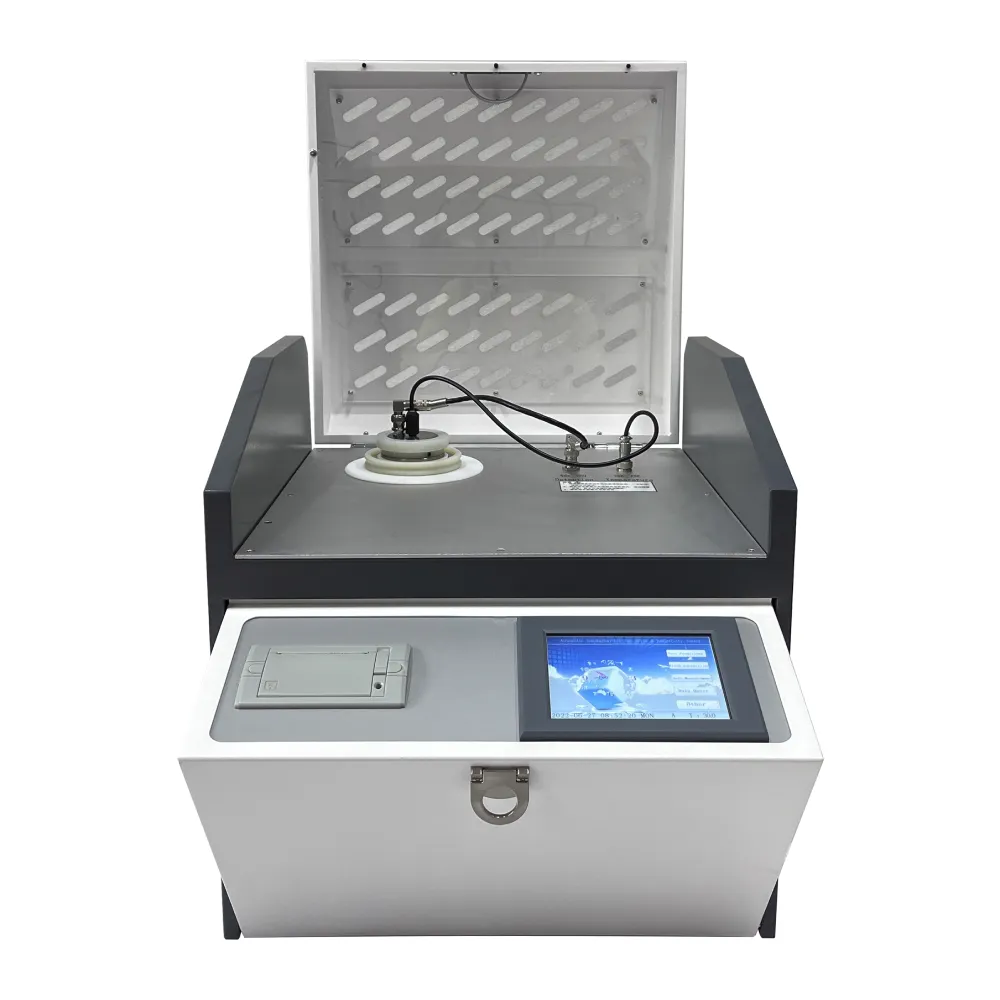TEL:
+86-0312-3189593
 English
English

Telephone:0312-3189593

Email:sales@oil-tester.com

-
 Afrikaans
Afrikaans -
 Albanian
Albanian -
 Amharic
Amharic -
 Arabic
Arabic -
 Armenian
Armenian -
 Azerbaijani
Azerbaijani -
 Basque
Basque -
 Belarusian
Belarusian -
 Bengali
Bengali -
 Bosnian
Bosnian -
 Bulgarian
Bulgarian -
 Catalan
Catalan -
 Cebuano
Cebuano -
 China
China -
 China (Taiwan)
China (Taiwan) -
 Corsican
Corsican -
 Croatian
Croatian -
 Czech
Czech -
 Danish
Danish -
 Dutch
Dutch -
 English
English -
 Esperanto
Esperanto -
 Estonian
Estonian -
 Finnish
Finnish -
 French
French -
 Frisian
Frisian -
 Galician
Galician -
 Georgian
Georgian -
 German
German -
 Greek
Greek -
 Gujarati
Gujarati -
 Haitian Creole
Haitian Creole -
 hausa
hausa -
 hawaiian
hawaiian -
 Hebrew
Hebrew -
 Hindi
Hindi -
 Miao
Miao -
 Hungarian
Hungarian -
 Icelandic
Icelandic -
 igbo
igbo -
 Indonesian
Indonesian -
 irish
irish -
 Italian
Italian -
 Japanese
Japanese -
 Javanese
Javanese -
 Kannada
Kannada -
 kazakh
kazakh -
 Khmer
Khmer -
 Rwandese
Rwandese -
 Korean
Korean -
 Kurdish
Kurdish -
 Kyrgyz
Kyrgyz -
 Lao
Lao -
 Latin
Latin -
 Latvian
Latvian -
 Lithuanian
Lithuanian -
 Luxembourgish
Luxembourgish -
 Macedonian
Macedonian -
 Malgashi
Malgashi -
 Malay
Malay -
 Malayalam
Malayalam -
 Maltese
Maltese -
 Maori
Maori -
 Marathi
Marathi -
 Mongolian
Mongolian -
 Myanmar
Myanmar -
 Nepali
Nepali -
 Norwegian
Norwegian -
 Norwegian
Norwegian -
 Occitan
Occitan -
 Pashto
Pashto -
 Persian
Persian -
 Polish
Polish -
 Portuguese
Portuguese -
 Punjabi
Punjabi -
 Romanian
Romanian -
 Russian
Russian -
 Samoan
Samoan -
 Scottish Gaelic
Scottish Gaelic -
 Serbian
Serbian -
 Sesotho
Sesotho -
 Shona
Shona -
 Sindhi
Sindhi -
 Sinhala
Sinhala -
 Slovak
Slovak -
 Slovenian
Slovenian -
 Somali
Somali -
 Spanish
Spanish -
 Sundanese
Sundanese -
 Swahili
Swahili -
 Swedish
Swedish -
 Tagalog
Tagalog -
 Tajik
Tajik -
 Tamil
Tamil -
 Tatar
Tatar -
 Telugu
Telugu -
 Thai
Thai -
 Turkish
Turkish -
 Turkmen
Turkmen -
 Ukrainian
Ukrainian -
 Urdu
Urdu -
 Uighur
Uighur -
 Uzbek
Uzbek -
 Vietnamese
Vietnamese -
 Welsh
Welsh -
 Bantu
Bantu -
 Yiddish
Yiddish -
 Yoruba
Yoruba -
 Zulu
Zulu
ກ.ພ. . 06, 2025 02:29
Back to list
hipot test for transformer
Hypot testing, short for high potential testing, is a critical procedure in the maintenance and testing of transformers. By applying a high voltage to test the insulation properties, it ensures the reliability and safety of electrical transformers. This practice is an essential part of ensuring transformers perform optimally, especially in environments where electrical failures can lead to significant operational downtimes and safety hazards.
Trust in this testing method is built on decades of successful applications across different sectors. As one of the most dependable methods for assessing electrical insulation, it has set industry standards for ensuring transformer safety. Companies often trust seasoned engineers who bring a wealth of experience and professional judgment—skills honed through years of rigorous hands-on work with this equipment. Good hypot testing practices involve a combination of technical expertise and an adherence to stringent safety protocols. The engineers must not only interpret the test results with accuracy but also ensure that the testing itself poses no risks to the operator or the equipment. Properly calibrated equipment and adherence to industry regulations are non-negotiable aspects that build trust with clients, guaranteeing that their testing needs are met efficiently and effectively. The evolution of hypot testing technology continues to enhance its accuracy and ease of use. Modern testers often come equipped with advanced features such as programmable test sequences, automated result recording, and enhanced safety mechanisms. These advancements make the tests quicker, more accurate, and more reliable, benefiting industries by maintaining operational efficiency and sustaining safe working conditions. To conclude, hypot testing for transformers is an indispensable part of electrical maintenance. Its role transcends mere diagnostics; it is a safeguard that upholds the integrity of electrical systems. Companies must prioritize this testing to avert costly failures and ensure operational continuity. Beyond the technical benefits, sustained commitment to hypot testing fosters a culture of safety and reliability, hallmarks of the most successful organizations.


Trust in this testing method is built on decades of successful applications across different sectors. As one of the most dependable methods for assessing electrical insulation, it has set industry standards for ensuring transformer safety. Companies often trust seasoned engineers who bring a wealth of experience and professional judgment—skills honed through years of rigorous hands-on work with this equipment. Good hypot testing practices involve a combination of technical expertise and an adherence to stringent safety protocols. The engineers must not only interpret the test results with accuracy but also ensure that the testing itself poses no risks to the operator or the equipment. Properly calibrated equipment and adherence to industry regulations are non-negotiable aspects that build trust with clients, guaranteeing that their testing needs are met efficiently and effectively. The evolution of hypot testing technology continues to enhance its accuracy and ease of use. Modern testers often come equipped with advanced features such as programmable test sequences, automated result recording, and enhanced safety mechanisms. These advancements make the tests quicker, more accurate, and more reliable, benefiting industries by maintaining operational efficiency and sustaining safe working conditions. To conclude, hypot testing for transformers is an indispensable part of electrical maintenance. Its role transcends mere diagnostics; it is a safeguard that upholds the integrity of electrical systems. Companies must prioritize this testing to avert costly failures and ensure operational continuity. Beyond the technical benefits, sustained commitment to hypot testing fosters a culture of safety and reliability, hallmarks of the most successful organizations.
Previous:
Latest news
-
Testing Equipment Industry Sees Major Advancements in 2025: Smart & Precision Technologies Lead the WayNewsJun.06,2025
-
Applications of Direct Current Generators in Renewable Energy SystemsNewsJun.05,2025
-
Hipot Tester Calibration and Accuracy GuidelinesNewsJun.05,2025
-
Digital Circuit Breaker Analyzer Features and BenefitsNewsJun.05,2025
-
Benefits of Real-Time Power Quality Monitoring Devices for Industrial EfficiencyNewsJun.05,2025
-
Earth Fault Loop Testing in High-Rise Building Electrical SystemsNewsJun.05,2025



